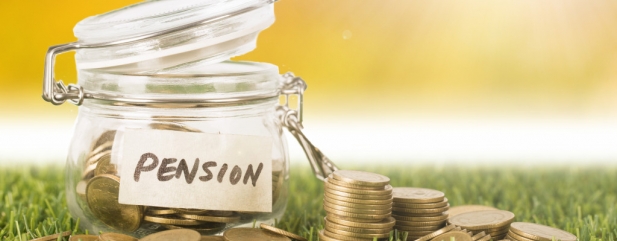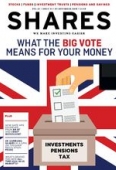Archived article
Please note that tax, investment, pension and ISA rules can change and the information and any views contained in this article may now be inaccurate.
‘How can I access £10,000 a year from my pension?’

If I had £100,000 invested in various investment trusts, income funds and shares and wanted to go into drawdown, how would I go about this?
Could I draw down £10,000 a year so that in any one year I have £2,500 tax-free for the first two months and pay tax on £7,500, paid in monthly instalments of £750 for the remaining 10 months of the year?
Anonymous
By Tom Selby, AJ Bell Senior Analyst
If you want to keep your pension invested while taking an income in retirement, there are two income options you can choose: drawdown or taking ad-hoc lump sums.
If you commit or ‘crystallise’ all or some of your fund in drawdown, a quarter will be available tax-free and the remaining 75% taxed in the same way as income. Tax will only be applied when you take the money out of your pension.
If you don’t want to commit your fund to drawdown you can instead take ad-hoc lump sums, with 25% of each withdrawal tax-free and the rest taxed as income.
With both options you can choose to set up regular payments to provide a steady income stream, or take a one-off withdrawal from your fund.
Turning to your specific example, it would be possible to achieve this outcome by crystallising £10,000 of your fund in drawdown.
A quarter of this amount (£2,500) could be released immediately tax-free, and you could then set up a £750 monthly payment from the remaining taxable portion (£7,500) of your crystallised pot.
However, before you do this there are a few things you’ll need to consider.
First, while entering drawdown doesn’t always mean you need to alter your investment strategy, you should still use it as an opportunity to evaluate the risks in your portfolio.
For example, someone following the approach you describe would likely put most if not all of the fund they are planning to use for income over the next 10 months or so in cash. This would mean selling your underlying investments, which in turn would incur costs.
Second, accessing taxable income from your pension will trigger the money purchase annual allowance, reducing the amount you can save tax-free in a pension each year to just £4,000 (most people have an annual allowance of £40,000, although for those with higher incomes the figure can be lower).
Third, you need to think about the sustainability of your retirement income strategy. If you take 10% of the underlying value of your pension as an income each year and are in good health, there’s a good chance you will run out of money in retirement.
One final thought: if you want to generate an income from your pension without having to sell investments, you could try following a ‘natural income’ strategy. This just means living off the income your investments produce, usually via dividends.
The advantage of this approach is that your capital can continue to grow, although your income is likely to fluctuate from year-to-year.
DO YOU HAVE A QUESTION ON RETIREMENT ISSUES?
Send an email to editorial@sharesmagazine.co.uk with the words ‘Retirement question’ in the subject line. We’ll do our best to respond in a future edition of Shares.
Please note, we only provide guidance and we do not provide financial advice. If you’re unsure please consult a suitably qualified financial adviser. We cannot comment on individual investment portfolios.
Important information:
These articles are provided by Shares magazine which is published by AJ Bell Media, a part of AJ Bell. Shares is not written by AJ Bell.
Shares is provided for your general information and use and is not a personal recommendation to invest. It is not intended to be relied upon by you in making or not making any investment decisions. The investments referred to in these articles will not be suitable for all investors. If in doubt please seek appropriate independent financial advice.
Investors acting on the information in these articles do so at their own risk and AJ Bell Media and its staff do not accept liability for losses suffered by investors as a result of their investment decisions.

 magazine
magazine








